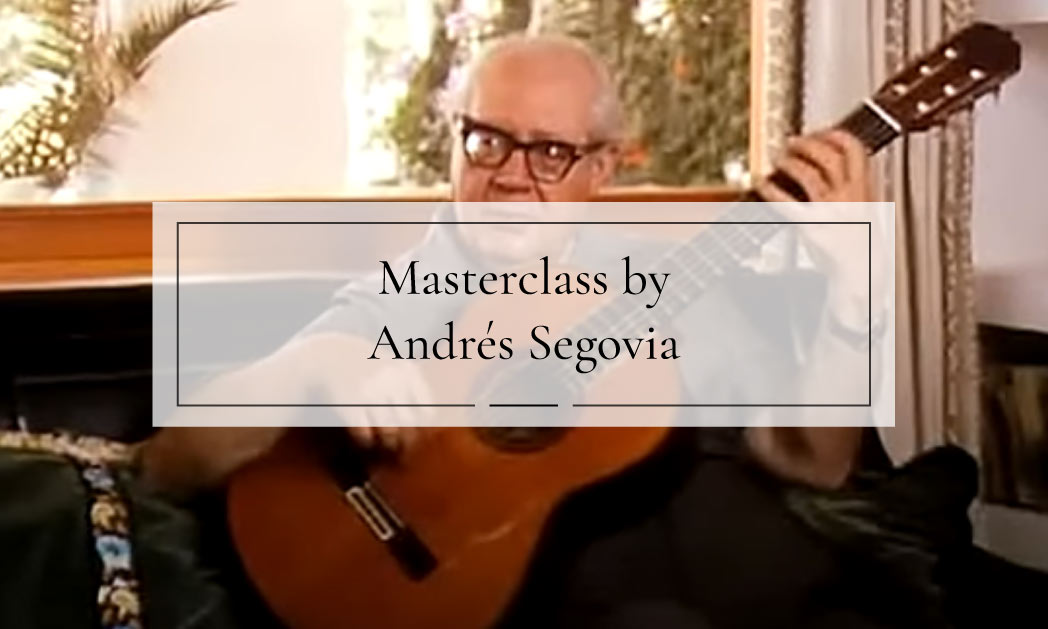Andrés Segovia gave the classical guitar an instrumental hierarchy, collaborating closely with great composers and showing the different colours of sound that this instrument can provide.
We leave you a part of the documentary “Andrés Segovia en la Casa de Los Olivos” where the master teaches us the timbres of the guitar.
How is it that, although the guitar enjoyed great success in the 19th century, there was still no repertoire when you started out?
The guitar is a very complicated instrument. As it is the only really polyphonic string instrument, it is impossible to compose if you don’t play it and if you don’t play it well.
It’s like an orchestra that we can see with binoculars upside down. What I’m trying to say is that the guitar contains all the instruments of the orchestra, but on a smaller scale.
It has many tonalities, a great diversity of timbres and it is necessary to develop these qualities of the instrument. More than listening to music, it’s about dreaming with music.
Do you mean that when a composer writes you a piece, you then decide what key to use, or do they dictate what they want?
When they dictate to me the orchestration of their guitar work, I almost always laugh because it’s impossible. What they intend is impossible.
What is the initial reaction of composers when you ask them to write for guitar?
The initial reaction becomes permanent because, from the very beginning, when they hear someone play one of their compositions on guitar, they don’t stop writing for guitar.
Castelnuovo has already composed around 140 pieces, Ponce the same, Torroba, Turina, Transman, Villalobos. They have all gone on to the end.


